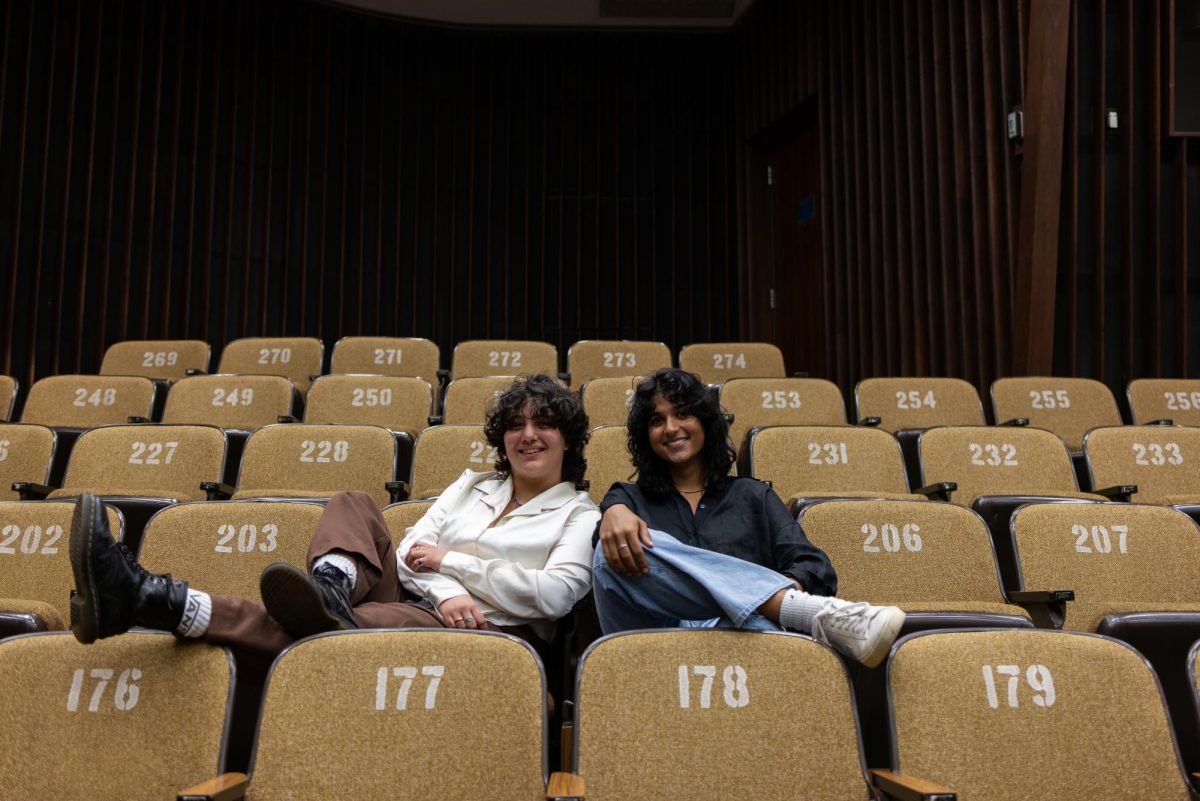Every Wednesday night, funk and hip-hop music is heard around the hall and through the closed doors of the Union Quadrangle Room. As Darren Lam made quick crossovers with his feet, he then dropped to the floor and spun on his back for what seemed like an eternity. As the tempo of the song increased, so did the speed of his spin, his legs tucking in toward his torso for maximum momentum.
Lam, a B-boy and nutritional science sophomore, was drawn to break dancing because of his appreciation for dance and the way it lends itself to creative expression. Everyone brings their own style to the floor, making what seems like effortless movements to the beat and creating camaraderie by circling around each other when doing floor work.
“All of this is muscle memory until your body gets used to doing it,” said Lam, president of B-boy Session. “Break dancing is the dance, but there’s lots of musicality involved; you have to have your own swagger.”
B-boy Session began in 2005, when UT alumnus Zeshen Wu felt the University needed to have a place for break-dancers to come together and practice new and old skills.
The group is primarily made up of UT students but open to anyone interested in the art. After graduating, Wu moved to Houston and now performs with Havikoro, one of the biggest break-dance crews in Texas. Since then, Lam and other experienced break-dancers have taken over the group.
The art of break dancing originated in the South Bronx in the late 1960s as a way for gangs to fight without actually hitting each other. In the 1980s the dance evolved into a way for groups to come together, either to perform or to battle.
Once a month the dancers of B-boy Session can compete in the Austin area in battle format in which three experienced break-dancers judge the cleanliness, musicality and difficulty of a dancer’s moves. The battles are held to promote the Austin break-dance scene, giving B-boy Session the opportunity to stage their own battles. The battles are predominately one-on-one but can be two-on-two, and the winner gets however much money is donated by the dancers before the battle starts.
“I wanted to be a part of something not many people can do, so I could feel unique in my own way,” Lam said. “It’s a form of expression and helps me relieve stress.”
Lam insists that a B-boy requires the mixed elements of gymnastics, dance and martial arts. It also consists of four primary moves: toprock, footwork, freezes and powermoves. Toprock moves consist of any string of steps performed from the standing position, freezes imply a halt of all body motion and powermoves combine fast momentum with acrobatic elements. Gloves and hats are also worn to reduce friction, allowing the members to spin faster on the floor.
“It’s all physics; you’re constantly going with the momentum of the movement,” Lam said. “Doing those windmills on the floor, your legs are spinning the whole time.”
While the windmills require an extreme amount of momentum, the members of B-boy Session agree that the powermoves are the most challenging physically. The physical nature comes from having to, at times, be able to support their entire body weight with only one hand.
“It pushes your body to a limit that you’ve never done before,” said Yoshi Ko, member of the group and UT alumnus.
Most of their dance moves are completely freestyle. The men and women of B-boy Session rely on the four mirrors in the Quadrangle Room to help them see what moves look good and what needs more work.
“You need [the mirrors] for perfection,” Ko said. “You want to be able to watch yourself and the better your stuff looks, the better executed it will be.”
While Lam said break dancing is male-dominated, girls have also found the artistic outlet to be relaxing and rewarding. Sarah Labianca, a biomedical engineering freshman, just joined B-boy Session this semester.
“I haven’t picked up any skills; it’s a lifetime process,” Labianca said, and then began to laugh. “It was so awkward at first, but I never considered quitting.”
Although the movements seemed awkward in the beginning for Labianca, she continued to come back every Wednesday. Many newcomers only come once and then realize it’s much harder than it looks, even though most members of B-boy Session don’t have any previous dance experience before joining. Instead, all of the skills they learn and muscle strength they’ve gained has come from hours of daily practice, along with watching their peers and studying YouTube videos.
As break-dancers, they’re used to the bruises and falls it takes to impress a crowd, but at the same time have grown accustomed to spectators not fully grasping the artistry behind the headstands and spins.
“There’s all of these misconceptions that its just people sliding on the floor, but it’s an art form,” Lam said. “People watching think it’s all acrobatic because they don’t realize the art of combining the skills with the beat.”




















